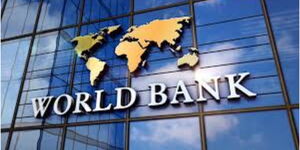As the tough economy persists, Kenyans may soon be forced to dig deeper into their pockets to afford essential household products for daily survival.
A survey done by the Central Bank of Kenya (CBK) and published on Thursday revealed that cereal prices, including staple foods such as maize, will likely go up over the next month.
The price of sifted maize flour is expected to go up to 21 per cent from the 9 per cent that was recorded in March.
Prices of sugar, cooking fat, and cooking oil (salad) will also go up, reflecting developments in the global market where prices of these items have been rising in the recent past.
Sugar prices will go up by 26 per cent from the one per cent perception index recorded by the respondents in March.
The prices of cooking oil are expected to go up by a seven per cent upward adjustment from the eight per cent.
The prices of tomatoes are also expected to go up in April, a phenomenon that is likely to spill over to May due to the prevailing long rains that the weatherman predicted would extend to the first weeks of the month.
''Balance of opinion (BOO) on expected price changes shows prices of key food items are expected to increase in April 2025, mainly cereals and select vegetables. Respondents expect prices of maize products and related items to be relatively higher in April 2025 relative to March 2025, mainly reflecting seasonal patterns," read part of the survey by the CBK.
In line with the long rainy season, prices of fast-growing vegetable items, particularly kales, sukuma wiki, traditional vegetables, cabbages, and spinach, are, however, expected to decline, offering a slight reprieve for Kenyans.
Additionally, the prices of broken and unbroken aromatic rice are expected to also offer relief to consumers, with the survey predicting a significant drop.
The survey highlighted several factors to be among the list of contributing factors to the price fluctuations, even as the overall inflation is expected to be relatively average.
Middlemen, transport costs, weather conditions, input costs, labour costs, and the Russian-Ukrainian war were highlighted as some of the contributing factors.












